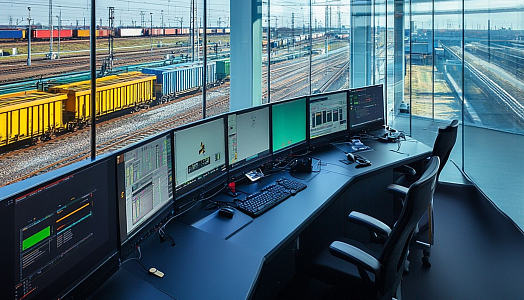Train Supervision System for Chinese Metros
Highlights
For 5 years, the PSA team has supported Automatic Train Supervision Systems for various metro networks across China. The client’s main goal was to seamlessly integrate driverless train operation through CBTC system implementation, without compromising safety. Consequently, all the emerging issues with train tracking, scheduling, or route planning would be solved immediately, while the rail management system would have increased automation.
Challenge
Client Challenge
Ensure reliable train supervision control for driverless train movements.
Project Objective
Continuous support and immediate troubleshooting for train supervision systems. Seamless implementation of CBTC for dispatching systems.
Solution
Working as a support team, PSA resolved hundreds of issues each year that interfered with the correct operation of the Automatic Train Supervision Control system, as well as with train management from the back office. We prioritized incoming defects and change requests, solving the most critical issues once they were reported.
From investigation to testing, we fixed bugs and inconsistencies that affected various aspects of train supervision, such as:
-
Eliminated loss of connection with trains and rail stations, as well as long train loading
-
Synchronized tracking IDs with trains schedules, eliminated false train identifications
-
Eliminated false Public Announcements by adjusting arrival times and destination points
-
Provided seamless operation of the system by any dispatcher in case of power-off, eliminated loss of files
-
Configured user roles and joint access
-
Introduced additional confirmation for critical requests
-
Accelerated testing through troubleshooting the Simulator tool
-
Eliminated random train stops at stations where it was not required
-
Added display of additional elements, such as transfer tracks
-
Fixed interface issues of wrong coloring, dialog windows, location of the elements, and so on.
To improve dispatching control and accelerate business processes for rail networks, our engineers provided the system with new functions:
- Communication between dispatchers and maintainers regarding wayside equipment failures
- Train scheduler tool deployment
- Automatiс train schedule updates and their transfer to the Public Announcement system
- Automatic creation, editing, and closing of temporary speed restrictions
- Tie-ins with an alarm system including emergency switch, fire alarm, and failover
- Formatting of messages and their automatic transfer to 3rd party systems
- Drawing train graphs and exporting the graphs to a file or to print
To provide seamless integration of CBTC into the existing dispatching system, the PSA team performed the following tasks:
-
Development of the Interstation interlocking functionality
-
Added communications for interlocking wayside controllers
-
Resolved memory leaks and improved CPU usage of the interlocking controller
-
Provided compatibility with CBTC hardware through HAL design and remote debugging
A majority of our railway signaling solutions were provided in close cooperation with the client and 3rd party contractors who also participated in CBTC deployment for the target metro networks. As a result, PSA performed a successful CBTC implementation at a time when driverless train systems were just beginning to be adopted globally.
Development Included
- Software Change Requests Implementation
- New Features Implementation
- HAL Design & Remote debugging
- GUI Updates and Modifications
- Unit testing
- Regression testing
- Functional Testing
- Software Configuration
- Documentation Creation
Results

-
CBTC has been implemented across 300 miles of railway in China
-
400+ defects were eliminated on 8 lines of the Chinese metro
-
Human errors were eliminated through the system’s smart decision-making
Technology Breakdown
- 5 people
- October 2011 – December 2016







